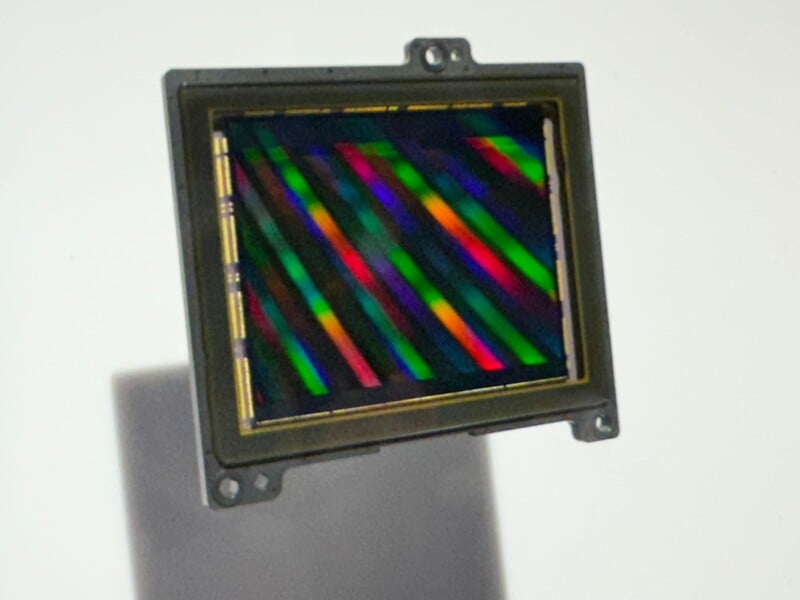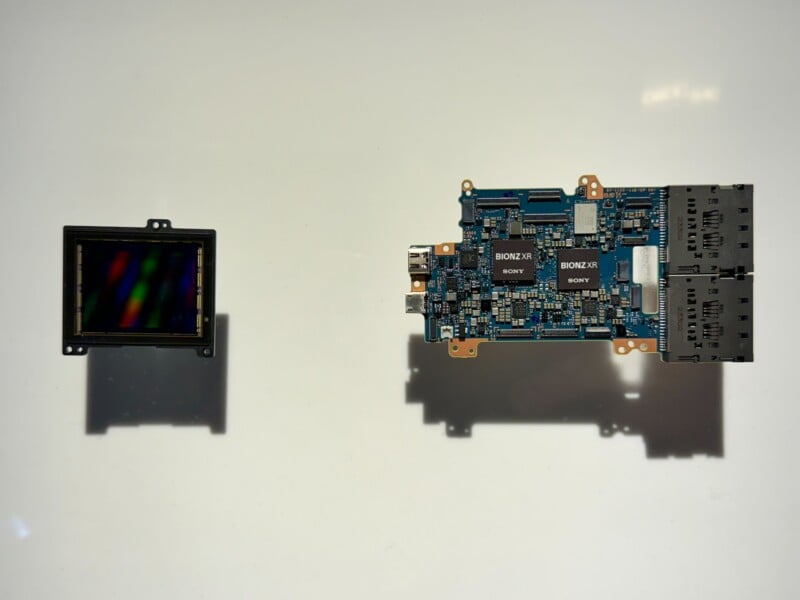![]()
This year marks the 10th anniversary of the first Sony Alpha 7, the first Alpha full-frame interchangeable lens mirrorless camera. Sony is marking the occasion by announcing a breakthrough advancement in imaging technology — the Sony a9 III, the first full-frame ILC to incorporate a global shutter image sensor.
Sony has long been at the forefront of innovation in the mirrorless camera space. However, amid concerns that the company had begun to rest on its laurels, demand for an exciting innovation has grown. Today’s Sony event introduces two groundbreaking new products.
Alongside the world’s lightest 300mm f/2.8 lens, a significant advancement in optical technology, Sony has unveiled a new sports-oriented camera.
The Sony a9 III is the world’s first full-frame global shutter image sensor. Promising blackout-free 120 frames per second shooting, with real-time recognition autofocus using a dedicated AI processing unit, the camera is designed for high-speed action photography.


A global image sensor has many benefits for photography, not the least of which is the complete elimination of rolling shutter, as every pixel on the image sensor is read simultaneously.
The a9 III offers an impressive new shooting speed of 1/80,000s, although the shutter speed is capped at “only” 1/16,000s when shooting continuously. The move to a global sensor also has big benefits for shooting with flash, enabling flash sync at any shutter speed.
![]()
The move to global sensor technology also means truly flicker-free shooting, which is a big deal to photographers who shoot with artificial light, especially sports photographers in environments with LEDs and fluorescent lights.
Concerning speed, the full-frame stacked 24.6-megapixel CMOS image sensor can shoot at 120 frames per second, yes, 120, with full autofocus and automatic exposure tracking and metering. All with zero distortion. The buffer depth is 1.6 seconds, and the a9 III can even shoot 14-bit RAW in this mode — which is 6GB/s worth of data.
The EVF is built to match, ensuring blackout-free shooting even at 120fps, which means the EVF refreshes at 120Hz.
Powering the camera is the Bionz XR processing engine, promising eight times more power than the a9 Mark II’s processor.
Sony has also introduced Pre-Capture, allowing photographers to capture the moment before they fully press the shutter. This mode also works at up to 120 frames per second, so the camera is continuously recording up to a full second of images. Once the shutter is pressed, the a9 III records the second before.
![]()
![]()
Of course, 120 fps is a lot, and overkill for many situations. Sony has added Speed Boost, controlled by default with the C5 function button on the front of the camera. By pressing the custom button, photographers can go to 120 fps only when needed, all without removing their finger from the shutter.
With so many photos, playback is handled differently now, with images shot at super-high speed displaying back as a video sequence.
Sony promises its best autofocus and subject recognition ever in the a9 III. That said, hands-on testing is required to fully appreciate what is different about the a9 III from other recent AI-powered cameras like the a7R V.
![]()
Some AF specs remain the same, including a 759-point AF system. The autofocus points cover 95.6% of the image sensor and the camera promises autofocus down to -5 EV. Sony has added extra-small and extra-large focusing points, on top of small, medium, and large options. Extra-small is about the size of the eye autofocus area.
The camera’s in-body five-axis image stabilization system promises up to eight stops of shake correction. Sony says that framing stability is improved thanks to synchronized IBIS performance.
Regarding video, the a9 III has 6K oversampling for 4K/60p video and 4K/120p movies without a crop. The camera promises 10-bit 4:2:2 All-I, 16-bit RAW output, S-Cinetone and S-Log3, plus dynamic active mode stabilization. By the way, the a9 III is the first Alpha camera to offer 4K/120p video without a crop.
![]()
The a9 III also looks a bit different. It features a refined, ergonomic front grip design and a four-axis multi-angle LCD monitor. The shutter has a quick-response design, which Sony says “feels better” and is “more responsive.” As mentioned, the C5 function button on the front is new. The drive mode dial offers a new lock function, enabling completely one-hand operation.
![]()
![]()
The 4-axis LCD is a 3.2-inch display with 2,095K dots and a wide color gamut (DCI-P3). As expected, it is also a touch panel.
The a9 III works alongside a redesigned optional vertical grip, which mimics the a9 III’s new design, including the refined grip and the C5 button. It also offers parallel power, meaning that each battery is used simultaneously, not one after the other.
The Promise of Firmware Updates
The Sony a9 III will receive after-launch support in the form of functional enhancements like FTP operability, relay playback, and C2PA format support. These updates will come in the Spring of 2024.
Pricing and Availability
The Sony a9 III will arrive next spring for $5,999.
Image credits: Unless otherwise noted, photos courtesy of Sony
